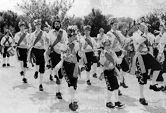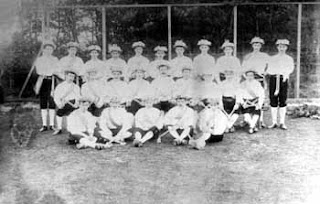I have been asked to define freedom, not as I previously did (in political terms) but in philosophical terms. I wonder if, in fact, my philosophical definition is not implicit in my political expression, because if I argue from a left-wing libertarian (anarchist) point of view I must believe that free will and moral responsibility are possible. Nevertheless I will try to put my philosophy into words, or at least into some sort of context.
This is not a learned study, I am in no way a professional or even an amateur philosopher, I have never studied the subject. However for once I will cite references throughout this blog entry – as near as I can to the Harvard referencing system – where I have sought definition and guidance. The two articles by Galen Strawson and Shaun Nichols are worth reading in any case, and I hope my readers will follow the relevant links. Also (shock horror!) I recommend the Wikipedia article on free will[*]. I also recognize that I am one of what Nichols would call the “philosophically naïve”, and an unschooled person who simply sits and mulls things over.
I will start by introducing a couple of terms which are important to the consideration of freedom: determinism and metaphysical libertarianism, and by defining them below:
Determinism – the theory that human choice is not free, but is decided by past events (Collins); or a theory or doctrine stating that acts of the will, occurrences in nature, or social or psychological phenomena are causally determined by preceding events or natural laws (Merriam-Webster, def determinism).
Metaphysical libertarianism – the theory that free will exists, is logically incompatible with determinism, that agents have free will, and that therefore determinism is false (Strawson).
I am conscious of the tension between determinist and libertarian schools, and that, by and large, the two schools tend to reinforce an incompatibilist overview, but on the other hand I recognize that there is also a compatibilist overview, stating that free will and moral responsibility are compatible with determinism (Nichols); possibly the father of compatibilism was Thomas Hobbes (1588 – 1679), and although compatibilism is often thought of as the weaker of the two overviews, being tantamount to “wishful thinking”, it has had its good share of respectable supporters from the world of philosophy – after Hobbes there are Locke, Leibniz, and Hume for example (Nichols).
Thomas Hobbes
If I subscribe to either of these overviews then I believe I am, by accident rather than by design (because I have drawn conclusions apparently by my independent thought and free will) a compatibilist.
It seems to me to be most obvious that, determinism or no, freedom cannot ever be an absolute for us. An agent – “one who acts or exerts power” (Merriam-Webster, def agent), “someone or something that causes effect” (Collins) – clearly acts only within physical limits; no matter how much I might will myself to fly, all that happens when I flap my arms is that my muscles begin to ache. As I am a physical being, and as my metaphysical (intellectual, spiritual, intuitive, and so on – the side of me that can contemplate the abstract) self is contained within that physical self, I wonder how it could not be similarly limited. There is only so much that I can comprehend. I believe that is what catalyzes (rather than drives or stimulates, as either concept would admit determinism) me to search for knowledge, for spiritual meaning, for happiness, for means of artistic expression; were I unlimited in my freedom to act I would have no reason, no motive to search, because I would already have and know everything. The limits appear to give meaning to the search.
Unless my searching is wholly pre-determined and I am hard-wired[**] (Britt) to search, I could choose not to. I realise that from this assumption will flow the eddy of circular argument of determinism versus libertarianism; as I am not sufficiently versed in philosophy (cop out!) I am not capable of squaring that circle – I will simply have to acknowledge the paradox involved and allow it to continue to circulate.
However, it seems to me a wonder that determinists do not simply go and jump off the nearest cliff. What on earth could be the point of our lives if we are products and not agents? If everything we think, feel, create, say, and do is determined and inevitable? Such a world view would render our lives meaningless to the point of being intolerable. Thus maybe it is for my own safety, my own mental wellbeing, that I must hold to a compatibilist and libertarian view of my thoughts and actions; maybe it is the only sane thing to do, rightly or wrongly, even if determinism happens to be true. Recognising constraint is not the same as recognizing determinism. For example, recognizing the constraint within the mental-makeup of a psychopath which prevents her from being able to distinguish between “right” and “wrong” does not lead inevitably to the abrogation of my own responsibility for my actions.
It is difficult sometimes to hold on to the concept of freedom when it is constrained or defined. It is almost facile to say that “freedom defined is freedom denied” (Shea / Wilson), but facile or not it is part of the determinist/libertarian conundrum.
So where does compatibilism leave me? It leaves me feeling that notwithstanding our limitations we have, or have to act as though we have, an appreciable range of free will, and a moral obligation. That freedom, whatever else may bind it, is not bound by law and custom however. Neither the law nor societal expectations are natural constraints, or there would not be at one extreme the criminal and at the other the visionary, the innovator, and the rebel. It is this conviction that I hold that leads me from there to my politics – literally from my idiotikos to my politikos – and to the conviction that the moral and legal constraints imposed upon us largely by, and maintained for the benefit largely of, any concentration of wealth and power are not necessary or valid or necessarily-valid constraints, that they should be questioned, challenged, and that their demolition in the interests of experimentation in beneficial change should never be an “improper question” (for “improper question” perhaps see Copp). I have argued, or added the caveat, elsewhere (Marshall) that we ought to accept that to pass beyond solipsism we must give ourselves up to the unknown and make what is almost a leap of faith - to assume that what we perceive has reality; with this caveat in mind I would state that the perception that I am free is strong evidence that I am. Thus I would define freedom as "the capacity for independent decision and action without unnatural constraint."
If this short perambulation round the subject leaves much more open than closed, I am at a loss what else to say. However now you have some inkling of my thoughts about the subject, so feel free to comment or to ask for clarification. I won’t promise that I will be able to answer your questions, but you never know!
[*] Maybe I will deal with Wikipedia another time, when I ask the question “What the heck is ‘common knowledge’?”
[**] The pop-science concept of our brains’ being “hard-wired” as a physiological expression of determinism seems to be waning, at least as a fashionable, quasi-tabloid term.
____________________
References:
Collins Compact English Dictionary, (1994), Glasgow, HarperCollins.
COPP D, (2007), “The Wrong Answer to an Improper Question?”, in Canadian Journal of Philosophy, vol 37 (2007) supplement [vol 33], pp 97-130
MARSHALL M, (2008), "Esprit sans Dieu", in Recto-Verseau No. 194, Romont (Switzerland), Editions Recto-Verseau, p55.
2.jpg)








